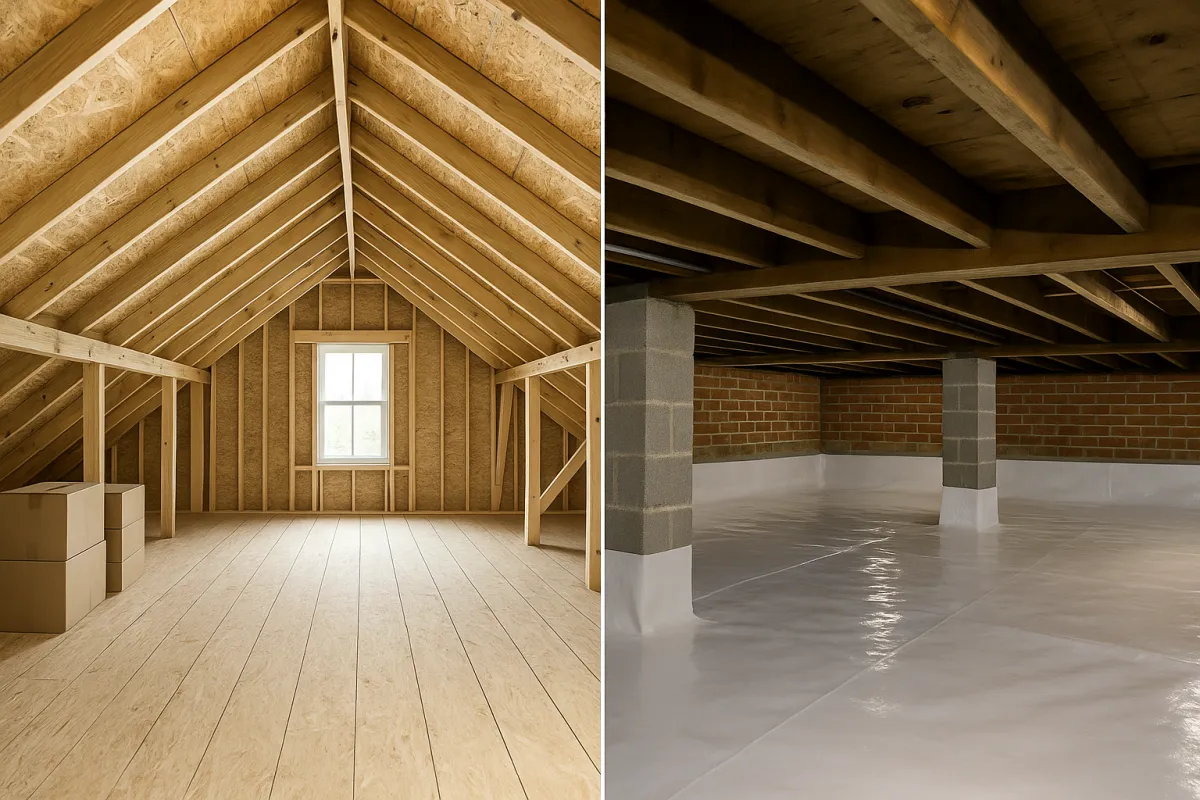
Crawl Space vs. Attic: Which One Do Pests Love More?
Crawl Space vs. Attic: Which One Do Pests Love More?
When homeowners think of pest problems, they usually picture ants in the kitchen or mice in the garage. But the real battleground often lies in the parts of your home you rarely see — the crawl space and the attic. These hidden zones can be a haven for everything from rodents to insects, but which one do pests really prefer?
Let’s explore how pests choose their home, what makes each area attractive, and how to defend both from infestation.

Why Pests Target These Areas
Pests, like all living creatures, are looking for three basic things: shelter, food, and moisture. Attics and crawl spaces offer varying degrees of all three — but in very different ways.
The Crawl Space: A Damp, Dark Invitation
Crawl spaces are typically dark, humid, and close to the earth. That makes them attractive to:
Rodents like rats and mice (looking for warmth and shelter)
Termites and carpenter ants (drawn to wood and moisture)
Spiders (feeding on the insects that gather there)
Cockroaches, centipedes, and earwigs (seeking moisture and decay)
Add in leaking pipes, standing water, or poorly sealed vents, and you’ve basically rolled out the red carpet for pests.
The Attic: A Warm, Dry Hiding Spot
Attics, on the other hand, offer:
Insulation that’s perfect for nesting
Easy roofline entry points for squirrels, bats, and birds
Quiet, undisturbed spaces that are rarely entered by humans
The attic is especially vulnerable in winter, when pests are trying to escape the cold. Gaps in vents or damaged shingles make it an easy target.

Head-to-Head: Crawl Space vs. Attic
Let’s break it down by common pests and see which space they tend to prefer.

So, which space do pests love more?
If you look at moisture-loving insects and ground-dwelling critters, the crawl space wins.
If you’re dealing with larger invaders and airborne pests, the attic is the hotspot.
But the real answer? They love both — for different reasons.

The Risks of Letting Either Space Go Unchecked
Ignoring either area is a mistake — because once pests get a foothold, they don’t stay hidden for long.
What Can Go Wrong in the Crawl Space:
Chewed insulation, wires, and plumbing
Mold growth from excess humidity
Damaged wood from termites and ants
Pests entering the main home through floor vents
What Can Go Wrong in the Attic:
Urine and feces buildup (rodents, bats, birds)
Damaged insulation = higher energy bills
Risk of electrical fires from gnawed wiring
Noise and odor issues
A small infestation in a hidden space can quickly turn into a full-scale home problem.
How to Keep Both Areas Pest-Free
Here’s how you can stop the invasion before it starts:
For Crawl Spaces:
Encapsulate and seal the space with a vapor barrier
Install proper drainage to avoid pooling water
Block entry points using steel mesh or pest-proof vents
Dehumidify to keep moisture low
Inspect annually for signs of damage or pest activity
For Attics:
Seal rooflines and flashing to block entry
Install vent screens to keep out squirrels and birds
Check insulation for signs of nests or droppings
Trim tree branches that hang near your roof
Inspect seasonally, especially in fall and winter
Preventive maintenance in both areas not only protects your home — it protects your health, too.

Final Thoughts: Crawl Space vs. Attic — It’s Not a Contest You Want to Win
If pests love one part of your home more than the other, it’s not a victory — it’s a vulnerability. The truth is, both your crawl space and your attic need regular attention.
The good news? Small changes — like sealing, dehumidifying, and scheduling routine inspections — can make a huge difference. Whether it’s a winter-ready attic or a dry, encapsulated crawl space, taking action now means fewer pests, better air quality, and a healthier home.
Because when pests lose interest in your home’s hidden zones… everybody wins.